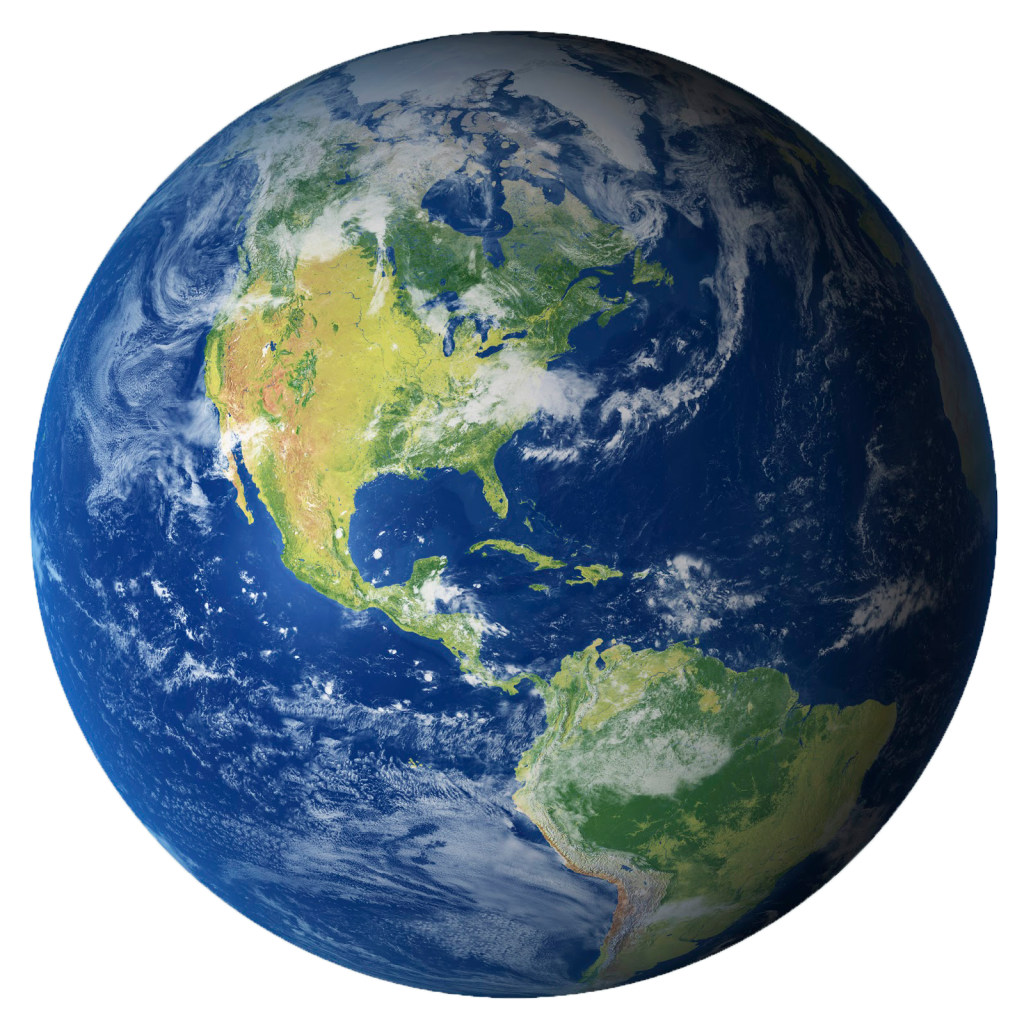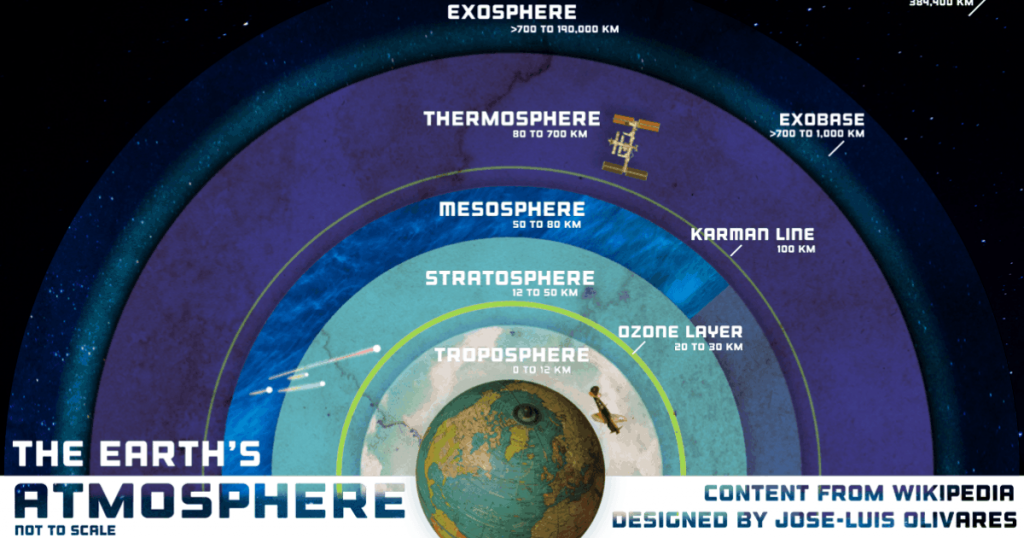
First Look
Earth is the third planet from the sun, set next to Venus and Mercury, Its the only planet known to have an atmosphere containing oxygen, water on its surface, and life. 71 perfect of the Earth’s surface is covered by water, mostly oceans. One-fifth of Earth’s atmosphere consists with oxygen, which is produced by plants.
Earth is usually known to be round but is actually shaped as something called an oblate spheroid. Its spin causes the poles to be squashed and swells the equator, causing the planet to be slightly off shape.
As Earth orbits the Sun, it’s simultaneously spinning on its axis. The axis is an imaginary line that goes straight down Earth in a 24 degree angle. You can also think of it as a top that is slightly tilted. The line starts at the North Pole and ends at the South Pole. It takes 23.934 or 24 hours to make a rotation and 365 days to make a orbit around the sun.
Clarification: This link is not related to this article, it is simply just for pictures. https://www.forbes.com/sites/startswithabang/2020/10/16/ask-ethan-will-earths-temperature-start-decreasing-over-the-next-20000-years/?sh=6ad1586e2643
Click this link and scroll down to see the 4th and 5th picture in case you’re confused. Looking at the pictures will also help clear confusion and paint a picture in your head.
Like Earth’s axis, the ecliptic plane is also tilted. The Earth’s ecliptic plane is a imaginary surface through Earth.

In this picture the ecliptic plane is perfectly centered, but usually the plane is either upwards or downward. So when Earth orbits the sun, the Northern and Southern hemispheres get different amounts of lights and causes seasons.
The Northern and Southern hemisphere are the two parts separated by the equator, a invisible line outlining the center of Earth. The Western and Eastern hemispheres are introduced when another line intersects the equator, making four parts. This additional line is called a prime meridian.
 o,
o,
When the Earth orbits around the Sun, it does not orbit in a perfect circle. Like all the other planets, it moves in a oval shape. Because of this, our planet is closer to the sun in January and farther in the July. But this effect is not as drastic compared to Earth’s titled axis, where the North and Southern Hemisphere is faced toward the sun.
Earth just happens to lie in a perfect spot where the temperatures are just right. This spot is called the “Goldilocks zone.” The perfect temperatures allow Earth to maintain liquid on its surface.
Formation
Earth formed 4.5 billion years ago when gravity pulled gasses and dust together. Imagine a invisible translucent ball and lots of meteorites, rocks, and other particles next to it. Then piece the particles evenly across the translucent ball. This would be the base or building block of the planet. Later on more pieces will come together and create a whole, giant ball, Earth!
Inner Structure

Earth’s core, the orange and red part, is about 4,400 miles wide, barely larger than half of Earth’s diameter and about the same size as Mar’s diameter! The outermost core, the orange part, is 1,400 miles wide and made out of liquid. In contrast, the inner core, in red, is mostly solid. The core is responsible for the Earth’s magnetic field. It helps deflect harmful charged particles shot from the sun.
The magnetic field is formed by the rotation of Earth. When the Earth is spinning in a circle, it forms electrical current and spreads around the planet. Without it, harmful light and high radiation from the Sun would be exposed. The magnetic field also holds our planet together.  The black circles symbolize the magnetic field, whereas the blue circle symbolizes the Earth.
The black circles symbolize the magnetic field, whereas the blue circle symbolizes the Earth.
Next to the core is the Mantle, (in orange), and is about 1,800 miles thick. The mantle is not completely stiff and can actually flow slowly. The Earth’s crust floats on top the the mantle. The gentle motion of the rock in the Earth’s crust brushes against the continents. This causes earthquakes, volcanoes, and forms mountain ranges, (a line of mountains connected by high ground.)
The last interior layer on Earth is the crust. There are two types of crusts: oceanic and continental. The continental crust is 50 miles thick and made up of continents, which are mostly consist with granite and other light silicate minerals. It and Examples: Quartz, feldspar, mica, amphibole, pyroxene, and olivine.
The oceanic crust is mostly made of dark, thick volcano rock called basalt and gabbro. It is thinner and more dense than the continental crust. The crust is usually 5 miles thick with an uneven pavement, causing water fills the lower areas and create world oceans.
At the bottom of the continental crust, temperatures can reach to about 1,800 degrees Fahrenheit and increases 3 degrees per mile. Earth’s core is extremely hot. Geologists think the temperature of Earth’s outer core is about 6,700 to 7,800 degrees, whereas the inner core could reach 12,600 degrees Fahrenheit, hotter than the Sun.
Magnetic field
Question: How is the Magnetic field formed and what would life be like without it? (Answered previously on section, “Inner Structure,” paragraph two.”
 The magnetic field is formed by the rotation of Earth. When the Earth is spinning in a circle, it forms electrical current and spreads around the planet. Without it, harmful light and high radiation from the Sun would be exposed. The magnetic field also holds our planet together.
The magnetic field is formed by the rotation of Earth. When the Earth is spinning in a circle, it forms electrical current and spreads around the planet. Without it, harmful light and high radiation from the Sun would be exposed. The magnetic field also holds our planet together.
Something weird about the North pole, (top of black line), is that it keeps accelerating northwest. The North pole has been tracked since 1830 and has moved 34 miles away from its regular location. Now the geographical North Pole is about 500 kilometers, (310 miles), away from the magnetic North Pole. Researchers do not understand why the pole keeps moving. But recently, they found two moving lobes in the magnetic field that are fighting near the Earth’s core.
These blobs have a negative charge and are located under Canada and Siberia, (located in Russia.) Between 1970 and 1999, the flow of the molten, magnetic in the Earth’s outer core changed. According to researchers, the magnetic blob beneath Canada widened in width in the early 2000s, weakening the magnetic intensity on Earth.
Eventually, the blob split into two parts, with one slightly stronger. The stronger one traveled under Siberia where the magnetic intensity was even stronger. Now the magnetic north field is moving toward Siberia and is destined to reach the region in decades.
Scientists are building models of Earth’s core, hoping to understand how it might move in the future. But so far they have not gotten much luck. These shifts have already caused major consequences for navigation systems. Anyone using a computer, ships, and smartphones are impacted.
Earth’s atmosphere
Important Note: Air surrounds Earth’s and becomes thinner farther from the surface. About 100 miles above Earth, the air is so thin that satellites can zip through the atmosphere with zero pressure.

The lowest layer of the atmosphere is the troposphere. It is constantly in motion and is the reason we have weather. When sunlight hits the earth’s surface, it causes warm air to rise in the troposphere. The air expands and cools. Because the cool air is denser, (thicker), it sinks and gets warmed by the Earth again.
Above the troposphere, 30 miles above the Earth’s surface is the stratosphere. The still air of the stratosphere contains the ozone layer. The ozone layer was created when ultraviolet light caused trios of oxygen atoms to bind together, creating ozone molecules. The ozone prevents the dangerous ultraviolet light from radiating into Earth’s surface, where it can damage and change life.
More will be added to this section, including information about the mesosphere thermosphere, and more.
More info: Earth’s moon
Our planet has one moon that is 2,159 miles wide, about one-fourth of Earth’s diameter, whereas other planets have multiple, disregarding Mercury and Venus.
That’s the end of this article! Some parts of this article may not be grammatically correct, for I have not edited yet. I will edit soon! Hope you enjoy this article and Happy New Years!

このページを掲載しようと決めた時、
すでに科学者か物理学者です。😊
シャノンの宇宙の新論文を楽しみにしています。
写真の活用が説明文章を際立たせています。
素晴らしいです。
将来は、物理学者でも科学者でもなれます。
さらにシャノンは、コンピューターのスぺシャリストにもなってしまった。
😊
Nice research work. You should be a scientist.
So glad earth lies in the “Goldilocks zone”. Too close and we end up like burnt toast. Too far and we have freezer burns.
I am the first to comment
Am I
yes you are